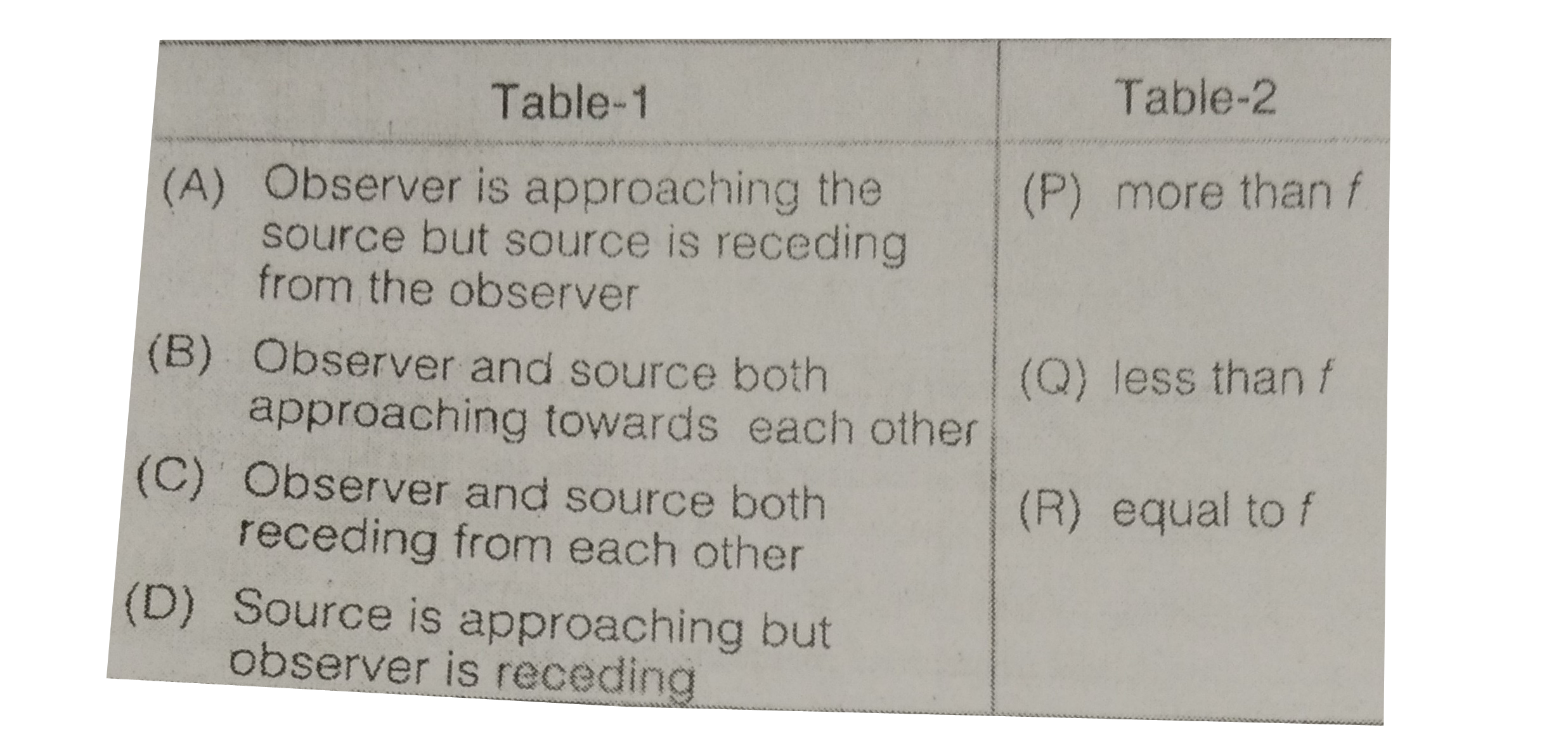A stationary source emits sound of frequency 1200 Hz. If would blows at the speed of 0.1 v. deduce
(a) The change in the frequency for a stationary observer on the wind side of the source
(b) Report the calculations for the case when there is no wind but the observer moves at 0.1 v speed towards the source (Given : velocity of sound = v)
To solve the problem, we will break it down into two parts as stated in the question.
Part (a): Change in frequency for a stationary observer on the wind side of the source
1. Identify the given values:
- Frequency of the source, f0=1200Hz
- Speed of wind, vw=0.1v (where v is the speed of sound)
- Velocity of the source, vs=0
- Velocity of the observer, vo=0
2. Apply the Doppler Effect formula:
The formula for the apparent frequency f′ for a stationary observer when there is wind is:
f′=f0v+vwv−vs+vw
Since vs=0 and vo=0, the formula simplifies to:
f′=f0v+vwv+vw
3. Substituting the values:
f′=1200Hz⋅v+0.1vv+0.1v=1200Hz⋅1.1v1.1v
This simplifies to:
f′=1200Hz
4. Calculate the change in frequency:
The change in frequency Δf is given by:
Δf=f′−f0=1200Hz−1200Hz=0Hz
Conclusion for Part (a):
The change in frequency for a stationary observer on the wind side of the source is 0 Hz.
---
Part (b): Frequency when the observer moves at 0.1v towards the source
1. Identify the given values:
- Frequency of the source, f0=1200Hz
- Velocity of the observer, vo=0.1v
- Velocity of the source, vs=0
2. Apply the Doppler Effect formula:
The formula for the apparent frequency f′ when the observer is moving towards the stationary source is:
f′=f0v−vov−vs
Since vs=0, the formula simplifies to:
f′=f0v−vov
3. Substituting the values:
f′=1200Hz⋅v−0.1vv=1200Hz⋅0.9vv
This simplifies to:
f′=1200Hz⋅0.9=1080Hz
Conclusion for Part (b):
The frequency heard by the observer moving towards the source at 0.1v is 1080 Hz.
---
- Frequency of the source, f0=1200Hz
- Speed of wind, vw=0.1v (where v is the speed of sound)
- Velocity of the source, vs=0
- Velocity of the observer, vo=0
The formula for the apparent frequency f′ for a stationary observer when there is wind is:
f′=f0v+vwv−vs+vw
Since vs=0 and vo=0, the formula simplifies to:
f′=f0v+vwv+vw
f′=1200Hz⋅v+0.1vv+0.1v=1200Hz⋅1.1v1.1v
This simplifies to:
f′=1200Hz
The change in frequency Δf is given by:
Δf=f′−f0=1200Hz−1200Hz=0Hz
The change in frequency for a stationary observer on the wind side of the source is 0 Hz.
- Frequency of the source, f0=1200Hz
- Velocity of the observer, vo=0.1v
- Velocity of the source, vs=0
The formula for the apparent frequency f′ when the observer is moving towards the stationary source is:
f′=f0v−vov−vs
Since vs=0, the formula simplifies to:
f′=f0v−vov
f′=1200Hz⋅v−0.1vv=1200Hz⋅0.9vv
This simplifies to:
f′=1200Hz⋅0.9=1080Hz
The frequency heard by the observer moving towards the source at 0.1v is 1080 Hz.
Topper's Solved these Questions
Similar Questions
A stationary source emits sound of frequency
υ=1200Hz. If a wind blows at the speed of 0.1c deduce (i) the percentage change in the wavelength and (ii) the change in the frequency for a stationary observer on the wind side of the source. What happens when there is no wind, but the observer moves at speed 0.1c towards the source?View SolutionA stationary source emits sound of frequency
υ=1200Hz. If a wind blows at the speed of 0.1c deduce (i) the percentage change in the wavelength and (ii) the change in the frequency for a stationary observer on the wind side of the source. What happens when there is no wind, but the observer moves at speed 0.1c towards the source?View Solution
Knowledge Check
- Question 1 - Select One
To a stationary man the frequency of a sound source moving towards the man appears to be
Alower than the original frequencyBsame as the original frequencyChigher than the original frequencyDlower as well as higher than the original frequency depending upon the speed of the source.
An observer measures speed of light to be C, when he is stationary with respect to the source. If the observer moves with velocity V towards the source then the velocity of light observed will be
View SolutionA source of sound of frequency 500 Hz is moving towards an observer with velocity 30 m/s . The speed of sound is 330 m/s . the frequency heard by the observer will be
View SolutionWhen source of sound moves towards a stationary observer, the wavelength of sound received by him
View Solutionwhen a source of sound of frequency f crosses stationary observer with a speed vs(<< speed of sound v) , the apparent change in frequency Δf is given by
View SolutionA sound source has frequency f. Source and observer both have same speed.For the apparent frequency observed by observer match the following.
 View Solution
View SolutionA source of sound emitting a note of frequency 200 Hz moves towards an observer with a velocity v equal to the velocity of sound. If the observer also moves away from the source with the same velocity v, the apparent frequency heard by the observer is
View SolutionAn isotropic stationary source is emitting waves of frequency n and wind is blowing due north. An observer A is on north of the source while observer B is on south the source. IF both the observers are stationary, then
View Solution

